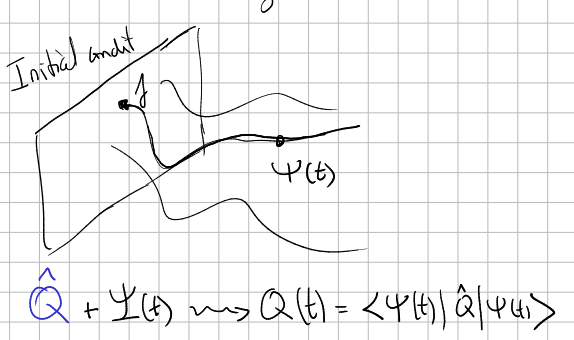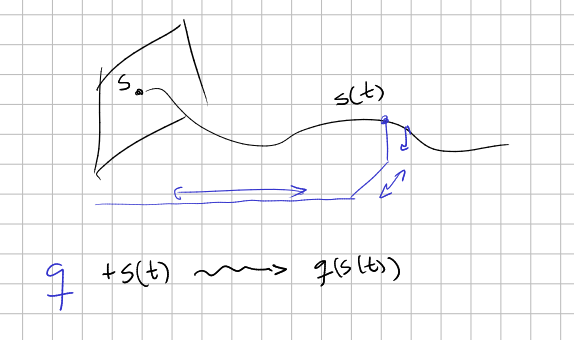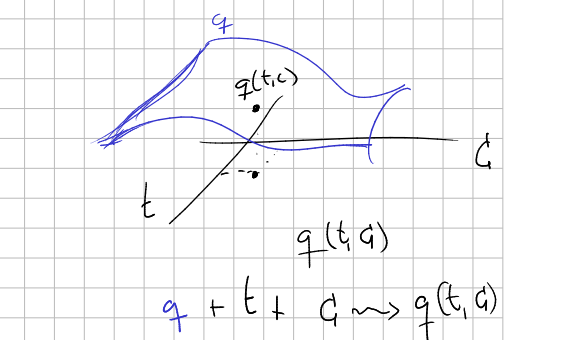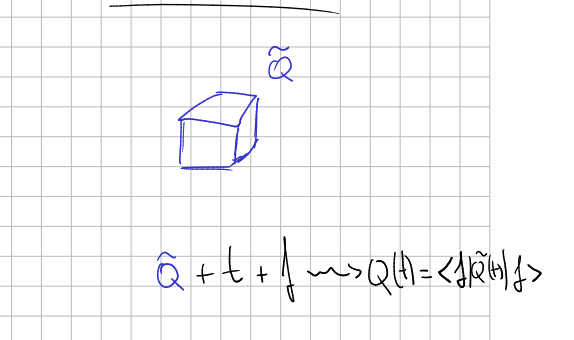Heisenberg vs Schrodinger picture
See also states and observables.
Schrodinger picture in QM
Remember that to solve a Quantum Mechanics problem we solve the Schrodinger equation
with initial condition
When we want to observe the system or make a prediction, at a desired time

Schrodinger picture in CM
In order to compare this with Classical Mechanics (for example, a particle in a potential) you must think of the states
When we write
Observe that these standard procedures are independent of time: we have established beforehand how are we going to take measures with our rods...

The key difference with QM is that in CM, the authentic state
But there is a trick. We usually assume the existence of a small bunch of observables that allows us to create a bijection between the set
So you identify the states
with
And now, you have two distinguished observables (standard procedures)
Heisenberg picture in CM
The use (and abuse) we do of

Observables constitute a commutative c-star algebra. And we have that the evolution of one of them is given by the equation
where
Heisenberg picture in QM
This different approach to observables like smooth functions let us think of them as elements of an algebra, which is commutative. For different reasons (see Why did physics go quantum) we suspect that the algebra of observables should be a noncommutative c-star algebra. I guess this is related to Noncommutative Geometry. So instead of time dependent functions of the state space, we take time dependent operators in the wavefunction space.

These operators, once they are known, are waiting for us to, provided a time
Mathematically, the relation between Schrodinger and Heisenberg picture comes as follows. A formal solution of equation
(indeed this is nothing but other way to write
Now, for every observable
In order to make predictions it is clear that (2) is substituted by
Observe that
since
and since
as desired.
Observe that equation (6) correspond to equation (4).
Worked example (to be corrected and adapted)
Let's solve for the average position of a free particle described by the given wave function in the Heisenberg picture.
1. Time Evolution of the Position Operator in the Heisenberg Picture
For a unit mass free particle, the Hamiltonian is given by:
where
The Heisenberg equation of motion for the position operator
In CM this corresponds to
The commutator between
Given that
Now, plugging this into the Heisenberg equation, we get the Heisenberg equation:
Integrating this (and noting that the initial position operator is just
2. Computing the Expectation Value at Time
We have
Given as initial condition the wavepacket
and
Both of these integrals can be computed directly:
- The integral
yields due to the symmetrical nature of the state. - The integral
yields based on the integral of the given wavefunction and its derivative.
Thus, the average position atis:
This result is as expected since the free particle's wave packet moves to the right with an average momentum of